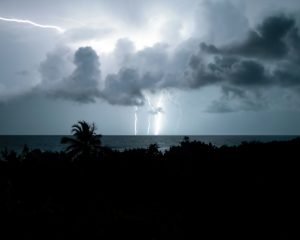Icebergs calving from glaciers is a fascinating natural phenomenon that occurs due to a combination of various factors. One of the primary reasons for glacier calving is the imbalance between the ice mass accumulation in the glacier’s upper regions and the loss of ice through melting or calving at the glacier’s terminus. This imbalance creates stress within the glacier, leading to the breaking off of large chunks of ice into the ocean. Furthermore, the flow of the glacier itself plays a crucial role in iceberg calving. As glaciers flow downhill under the force of gravity, they exert immense pressure on the surrounding ice. This pressure can cause fractures and weaknesses in the glacier, eventually leading to the calving of icebergs. The movement of the glacier is not uniform, with different parts of the glacier flowing at varying speeds, further contributing to stress and potential calving events.
Oceanic and Atmospheric Influences
Additionally, oceanic and atmospheric influences can also contribute to iceberg calving. Warmer ocean temperatures can melt the underside of glaciers, weakening their structural integrity and making them more prone to calving. The intrusion of warm ocean water beneath the glacier can accelerate the melting process, causing the glacier to become unstable and increasing the likelihood of calving events. Similarly, atmospheric warming can lead to increased surface melting of glaciers, adding to the overall stress on the ice mass and promoting calving.
Oceanic Factors
Consider how ocean currents and temperatures play a significant role. For instance, the presence of warm ocean currents can lead to increased basal melting. The West Antarctic Ice Sheet is a prime example, where warm circumpolar deep water contributes to the thinning of ice shelves. This melting from below reduces the ice shelf’s buttressing effect on the glacier, leading to faster ice flow and more frequent calving.
Atmospheric Conditions
Atmospheric conditions such as air temperature, precipitation, and even wind patterns can influence glacier stability. In Greenland, for example, rising air temperatures have led to increased surface melting during summer months. This meltwater can percolate through the ice, reaching the glacier bed and lubricating the ice flow, which in turn can enhance calving rates.
Impact of Climate Change
Climate change is a significant factor driving increased rates of iceberg calving in recent years. Rising global temperatures have led to faster melting of glaciers and ice sheets, resulting in more frequent and larger calving events. The increased calving not only contributes to the rising sea levels but also has far-reaching impacts on ocean ecosystems and weather patterns. As glaciers continue to retreat at accelerated rates, the calving of icebergs serves as a visible indicator of the profound changes occurring in polar regions due to climate change.
Glacial Retreat and Sea Level Rise
The retreat of glaciers contributes directly to sea level rise, a major concern for coastal communities worldwide. According to the Intergovernmental Panel on Climate Change (IPCC), melting glaciers and ice sheets are currently responsible for approximately one-third of global sea level rise. For instance, the rapid calving of the Jakobshavn Glacier in Greenland has been identified as one of the largest contributors to sea level rise in the Northern Hemisphere.
Ecological and Economic Impacts
The calving of icebergs also affects marine ecosystems. As icebergs melt, they release freshwater and nutrients into the ocean, which can alter the local salinity and nutrient balance, impacting marine life. Economically, increased iceberg presence can disrupt shipping lanes and fishing areas, posing challenges for industries dependent on ocean access.
The Mechanics of Iceberg Calving
Understanding the mechanics of iceberg calving requires delving into the physical processes within the glacier. The glacier’s internal dynamics, including ice deformation and fracture mechanics, are critical to predicting calving events.
Ice Flow and Fracture Mechanics
Glaciers are not static; they are constantly in motion. This movement is driven by gravity and internal deformation of the ice. As the glacier flows, it stretches and compresses, creating zones of tension and compression. Fracture mechanics come into play when the tensile stress exceeds the ice’s strength, leading to the formation of crevasses and ultimately, calving events.
Role of Subglacial Water
The presence of water at the glacier’s base can significantly influence calving. Subglacial lakes and channels can act as lubricants, enhancing the glacier’s slide over the bedrock. This increased basal sliding can lead to more rapid ice flow and increased stress at the glacier terminus, promoting calving.
Human Contributions and Mitigating Factors
While natural processes are the primary drivers of iceberg calving, human activities can exacerbate the situation. Industrial emissions contribute to atmospheric warming, which accelerates glacier melt. However, there are measures that can be taken to mitigate these impacts.
Reducing Carbon Emissions
Reducing carbon emissions is crucial for slowing atmospheric warming and subsequently, the rate of glacial melt. Transitioning to renewable energy sources, improving energy efficiency, and implementing carbon capture technologies are practical steps that can be taken.
Monitoring and Research
Enhanced monitoring and research efforts are essential for understanding and predicting calving events. Satellite imagery and remote sensing technologies allow scientists to track glacier movements and detect early signs of instability. This data is invaluable for developing predictive models and informing policy decisions.
Real-World Examples and Case Studies
Several glaciers around the world serve as important case studies for understanding the calving process and its implications.
The Larsen C Ice Shelf
In July 2017, a massive iceberg, known as A-68, calved from the Larsen C Ice Shelf in Antarctica. This event highlighted the vulnerability of ice shelves to warming temperatures and the potential for rapid changes in ice dynamics. The calving of A-68 reduced the size of the Larsen C Ice Shelf by about 12%, providing a stark example of the dramatic impact of calving events.
Columbia Glacier, Alaska
The Columbia Glacier in Alaska has been retreating rapidly since the 1980s, losing approximately 20 kilometers in length. This retreat is attributed to a combination of warming temperatures and changes in the ocean currents that bathe its terminus. The Columbia Glacier’s rapid retreat offers insights into the complex interplay between oceanic and atmospheric factors driving calving.
Common Misconceptions
Despite extensive research, there are several common misconceptions about iceberg calving that persist in public discourse.
Icebergs as Isolated Events
One misconception is that iceberg calving is an isolated event rather than part of a broader process of glacial dynamics. In reality, calving is a natural part of a glacier’s lifecycle, although exacerbated by recent climate changes.
Immediate Impact Perceptions
Another misconception is that the impact of calving is immediate and localized. While calving does have immediate effects, its broader implications, such as sea level rise and ecological disruptions, unfold over longer timescales and affect global systems.
Practical Steps for Future Research
To better understand and address the challenges of iceberg calving, future research should focus on several key areas.
Interdisciplinary Approaches
Integrating geophysical, oceanographic, and atmospheric sciences can provide a more comprehensive understanding of calving processes. Collaborative efforts among researchers from different disciplines can lead to more robust predictive models.
Long-Term Monitoring
Establishing long-term monitoring programs for key glaciers can help track changes over time and improve the accuracy of models predicting future calving events. This data is critical for policymakers planning for the impacts of sea level rise.
Community Engagement
Engaging local communities, particularly those in coastal regions, in monitoring and response strategies can enhance resilience to the impacts of glacier calving. Empowering these communities with knowledge and resources can help mitigate economic and social impacts.
By studying iceberg calving processes and their connections to broader environmental changes, scientists can better comprehend the implications of these phenomena and develop strategies to address the challenges posed by a warming world. Understanding the science behind iceberg calving is essential for predicting and mitigating the impacts of glacial melt on our planet’s environment and ecosystems.



